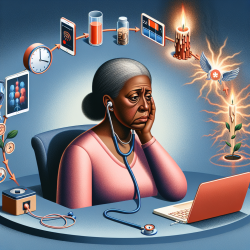Understanding Racism's Role in Youth Health: A Guide for Practitioners
In the realm of public health, understanding the multifaceted impact of racism is crucial, especially when it comes to addressing sexually transmitted diseases (STDs) among youth of color. A recent study, What Racism Has to Do with It: Understanding and Reducing Sexually Transmitted Diseases in Youth of Color, sheds light on how systemic racism contributes to health disparities and offers pathways for intervention.
The Role of Racism in Health Disparities
The study highlights that racism is not just a social issue but a critical determinant of health. It acts as a barrier, limiting access to resources and opportunities, thereby increasing the vulnerability of youth of color to STDs. The authors argue that racism creates an environment of social and economic marginalization, which in turn fosters risky sexual behaviors.
Key Findings for Practitioners
Practitioners can enhance their skills by understanding the following key findings from the study:
- Social Determinants of Health: Addressing social determinants like economic status and housing is vital. Interventions that focus on these can lead to significant reductions in risky behaviors.
- Community-Based Interventions: Programs that involve community empowerment and capacity building, such as the Mpowerment Project, have been successful in reducing unsafe sexual behaviors.
- Role of Education: Enhancing educational opportunities and access to accurate sexual health information can empower youth to make safer choices.
- Parental and Community Involvement: Encouraging parental involvement and leveraging community resources, such as faith-based organizations, can provide supportive environments for youth.
Encouraging Further Research
Practitioners are encouraged to delve deeper into the study and explore additional research on interventions that could mitigate the adverse effects of racism on youth health. Understanding the intersection of social, economic, and cultural factors is essential for developing comprehensive strategies to combat STDs among youth of color.
Implementing Change
To effectively implement the study's findings, practitioners should:
- Advocate for policies that address the root causes of health disparities, such as poverty and lack of access to healthcare.
- Develop culturally sensitive interventions that resonate with the communities they serve.
- Foster collaborations with community leaders and organizations to create supportive networks for youth.
- Engage in continuous education and training to stay informed about the latest research and best practices.
By integrating these strategies, practitioners can play a pivotal role in reducing health disparities and improving the well-being of youth of color.
To read the original research paper, please follow this link: What Racism Has to Do with It: Understanding and Reducing Sexually Transmitted Diseases in Youth of Color.










